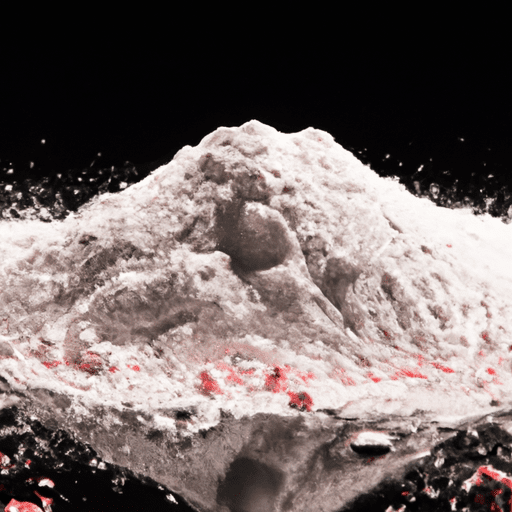Low Sodium Baking Powder: A Healthier Twist to Your Baking Adventures
When it comes to baking, finding the right balance between taste and health can sometimes be challenging. But fear not, dear bakers, as there is a solution that allows you to create delicious treats while keeping your sodium intake in check - low sodium baking powder! In this post, we’ll take you on a journey through the world of low sodium baking powder, exploring its taste, common uses in cooking, nutritional value, and even uncovering some interesting history and facts. So grab your aprons and let’s get started!
The Taste Test: Flavorful Magic in Every Bite
The first question that might pop into your mind is, “Does low sodium baking powder compromise on taste?” Not at all! While regular baking powder contains sodium bicarbonate as its primary ingredient, low sodium baking powder replaces it with other leavening agents like potassium bicarbonate or cream of tartar. This substitution allows your baked goods to rise without the added sodium, resulting in mouthwatering treats that retain their delicious flavors.
Versatile and Easy to Use
One of the fantastic aspects of low sodium baking powder is its versatility. You can use it in a wide array of recipes, from cakes and cookies to muffins and bread. It works its leavening magic, ensuring your creations rise to perfection.
To substitute regular baking powder with the low sodium variety, the general rule of thumb is to use 1.5 to 2 times the amount indicated in the recipe. For example, if a recipe calls for 1 teaspoon of regular baking powder, you would use 1.5 to 2 teaspoons of low sodium baking powder. This adjustment ensures that your baked goods still achieve that ideal rise.
The Nutritional Perks: Cutting Back on Sodium
If you’re keeping an eye on your sodium intake, low sodium baking powder can be a game-changer. By reducing sodium levels, it allows you to maintain a more heart-healthy diet without sacrificing the joy of baking. However, it’s essential to note that low sodium baking powder is not entirely sodium-free. While there is no standardized definition for “low sodium,” it generally contains significantly less sodium than regular baking powder.
A Peek into History: The Evolution of Sodium-Free Baking
The concept of low sodium baking powder is not a recent invention. It traces its origins back to the early 19th century, when chemists began experimenting with different leavening agents. English chemist, Alfred Bird, played a pivotal role in the development of early sodium-free baking powder. In the mid-19th century, Bird’s wife developed an allergy to eggs and yeast. In response, Bird formulated a sodium-free baking powder to help her continue enjoying baked goods. This invention not only revolutionized home baking but also laid the foundation for future advancements in low sodium alternatives.
Fun Facts about Low Sodium Baking Powder
Here are some intriguing facts that may surprise you:
Did you know that low sodium baking powder can also be used as an effective cleaning agent? It’s great for tackling stains on stainless steel, trophies, and even crayon marks.
Low sodium baking powder can be a lifesaver for people on low sodium diets or those with health conditions that necessitate restricting sodium intake.
When it comes to storage, ensure your low sodium baking powder is stored in a cool, dry place and away from moisture. This helps maintain its potency.
Start Your Low Sodium Baking Adventure Today!
Now that you’re armed with the knowledge of low sodium baking powder’s fantastic taste, versatility, and health benefits, it’s time to put your apron on and dive into healthier baking. Whether you’re an aspiring baker or a seasoned pro, low sodium baking powder opens up a world of possibilities to satisfy both your taste buds and your dietary needs. So, why wait? Get your hands on some low sodium baking powder and embark on a delicious baking journey that’s a feast for your senses and good for your health.
Happy baking!
Low Sodium Baking Powder
Origin: Baking powder is a leavening agent used in baking to help doughs and batters rise. The concept of baking powder originated in the 19th century when chemists discovered that combining an acid, such as cream of tartar, with a base, like baking soda, creates carbon dioxide gas, causing the dough to expand.
Common uses: Low sodium baking powder is a variant of regular baking powder that contains reduced sodium levels. It can be used as a substitute for regular baking powder in any recipe. Whether in cakes, muffins, or bread, low sodium baking powder helps create a light and fluffy texture by releasing carbon dioxide when it is heated.
Nutritional benefits: Low sodium baking powder provides the same leavening effect as regular baking powder but with reduced sodium content. Sodium is an essential mineral required by the body in small amounts, but excessive intake may have negative health effects for certain individuals. Low sodium baking powder allows individuals on a low-sodium diet or with sodium-sensitive health conditions to enjoy baked goods while maintaining dietary restrictions.
Unique properties: Low sodium baking powder is formulated by modifying the regular baking powder recipe to reduce the sodium content. Sodium bicarbonate (baking soda), cream of tartar, and a starch or cornstarch are typically the main ingredients in low sodium baking powder. The combination of these ingredients provides the necessary leavening power for baked goods without a significant increase in sodium levels.
Historical significance: Baking powder, in general, revolutionized the baking industry by allowing consistent rise and texture in baked goods without the need for natural fermentation processes. Low sodium baking powder, specifically, addresses the dietary needs of individuals who are mindful of their sodium intake. As awareness of nutrition and dietary restrictions has increased over time, the availability of low sodium baking powder provides an option for people looking to reduce their sodium consumption while still enjoying baked goods.




Use the share button below if you liked it.
It makes me smile, when I see it.